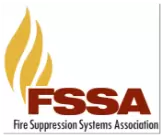A fire sprinkler inspection is a mandatory practice required once a year for every building with a fire protection system.
A fire sprinkler inspection is required MORE than once a year for a buildings with high-densities of population like hospitals, nursing homes, schools, and some apartment buildings. So, what is a fire sprinkler inspection? Let’s start form the beginning. We do a lot of work in and around Manchester, New Hampshire and if you are inside a commercial building in Manchester you might see a sign on the door that says “Fire Sprinkler Room”? Have you ever seen a sign like that? Inside that room is a pretty insidious combination of pipes, backflow preventers, valves, and alarms that comprise the heart of that building’s fire protection system. *Sometimes there is even a troll living in there.
This room is not only where the water comes into the building from the fire hydrants out on the street, but it is usually the room where 75% of a fire sprinkler inspection occurs. A fire sprinkler inspection includes testing and re-testing the valves which would automatically be activated in the event of a fire. The inspections are mandatory for every building in the US with a fire protection system as per the National Fire Protection Association– Standard #25. It is a federal requirement to have these systems tested regularly because of the crucial role they play in protecting the lives of that building’s inhabitants. The systems are actually made up of very simple components in their “guts” just like your car is- and like your car, they need an annual safety inspection to make sure that the brakes are working and the tires do their job. Missing this inspection can expose the operator and passengers to extreme risk.
A fire sprinkler inspection includes testing select components of the fire alarm and the multiple electronic sensors on the system too. The sensors are designed to trip in the event that they feel water moving through the pipes. You see, the water inside of the sprinkler pipes can stay in there for years without ever moving. The water just sits there waiting for a head to activate and then the water comes rushing out. When that water starts moving it activates some simple paddle-like thing inside the pipes. When those paddles move, they make an electronic contact that sends a signal to the fire alarm panel, and the alarm panel shrills out an alarm.
What about the sprinkler heads?
It’s a little-known fact that when we do a fire sprinkler inspection, the actual sprinkler heads spread out all over the building are not the focus. This is because the heads have only two states: 1. just fine; or, 2. spraying water all over the place. As a result, there is not much to check in on unless the client has rearranged the floor plan or done something else that might affect the sprinkler coverage.
Fire sprinkler inspection, fire protection, inspection, Manchester, New Hampshire
*Just seeing if you are paying attention.














